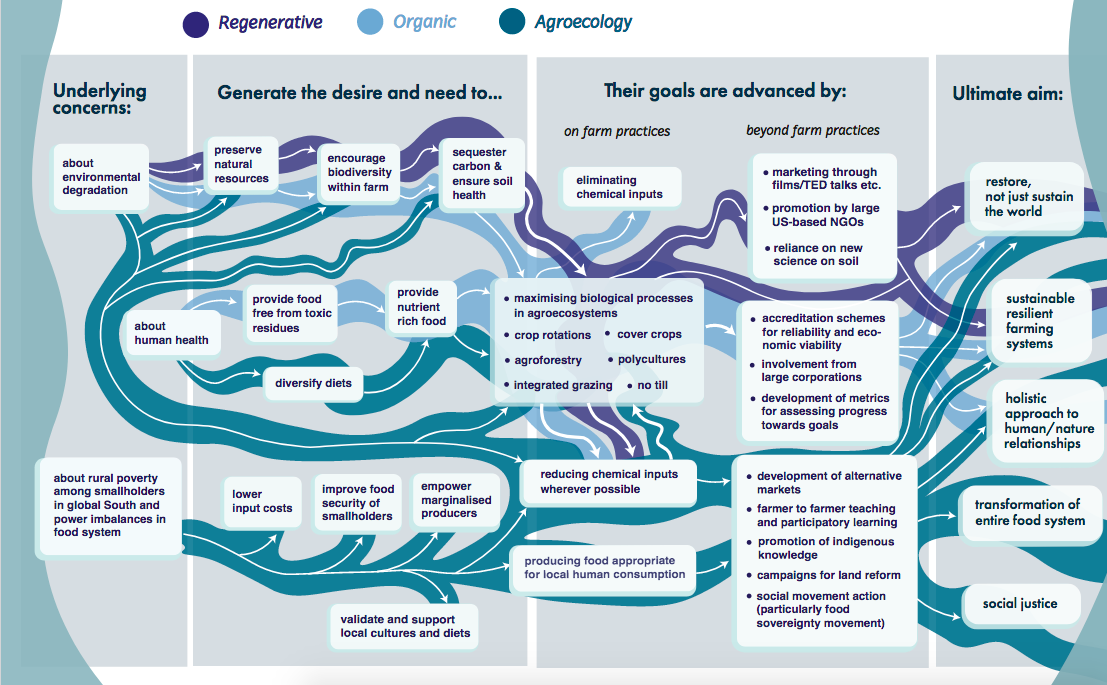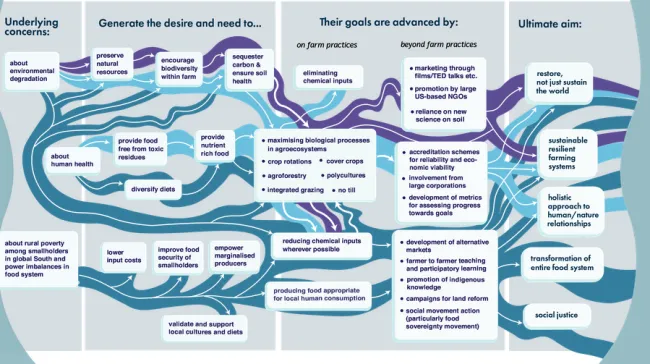The regenerative, organic and agroecology movements share many concerns, and offer seemingly similar solutions. We, at TABLE, therefore began to ask ourselves if they are perhaps repeated attempts to articulate the same things, or whether there are substantive differences. Dr George Cusworth (U Oxford) and Rachel Carlile (U Edinburgh) worked with graphic designer Emily Liang (WUR) to develop a diagram articulating these agricultural movements' similarities and differences.
What does one movement offer, that another doesn’t? And what makes one movement more prominent than another in certain geographical, economic or historical contexts? Do they compete for space, or does their co-existence allow them to collaborate and advance their shared goals on a larger scale?

This diagram emerged from such questions and conversations, and represents an initial attempt to understand how agroecology, regenerative agriculture and the organic movement relate to each other. In producing this diagram we tried to articulate what distinguishes each movement. This, of course, risks making them seem more different or more in conflict than
View the interactive diagrams and descriptions of each movement here – and then please let us know what you think we have right, and what we don’t, on our new interactive discussion platform.
We welcome contributions and suggestions from people identifying with these movements and/or working on these topics, as we continue to reflect on these issues.
Please get in touch with matthewkessler@tabledebates.org if you wish to use this diagram on your webpage or in a classroom.
Suggested citation:
Carlile, R. and Cusworth G. (2021) Exploring the ebbs of flows of different agricultural movements. What distinguishes regenerative agriculture, organic and agroecology. TABLE Visuals. TABLE, University of Oxford, Swedish University of Agricultural Sciences and Wageningen University & Research.




